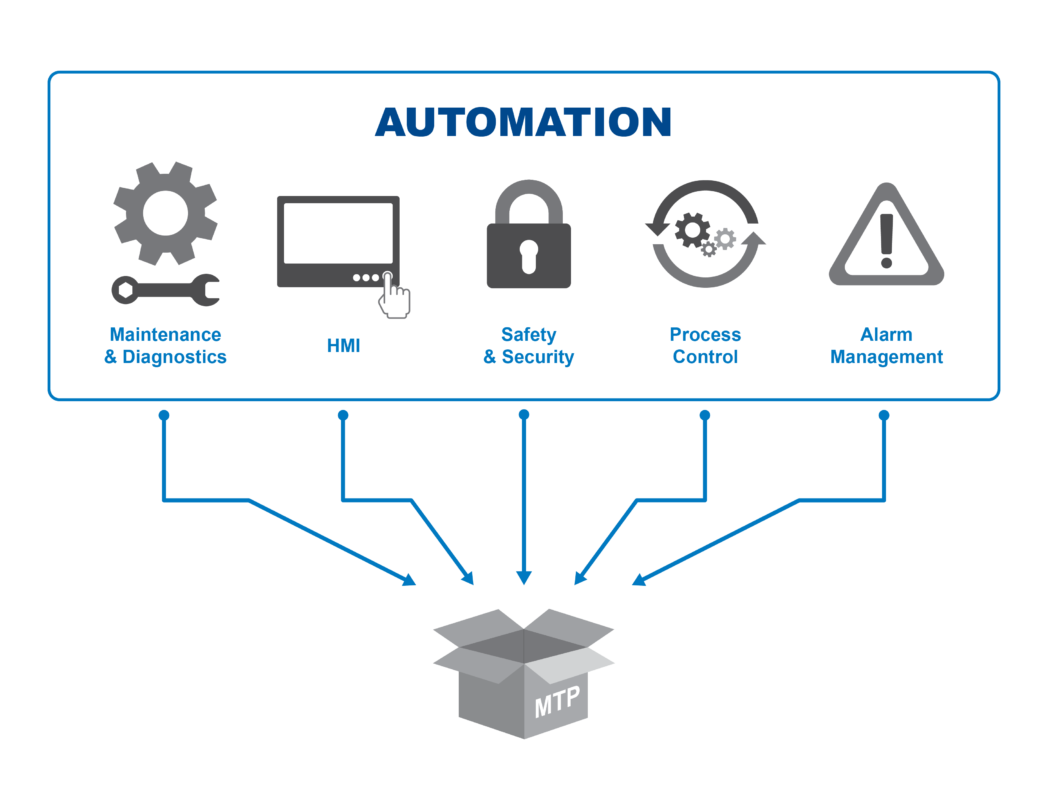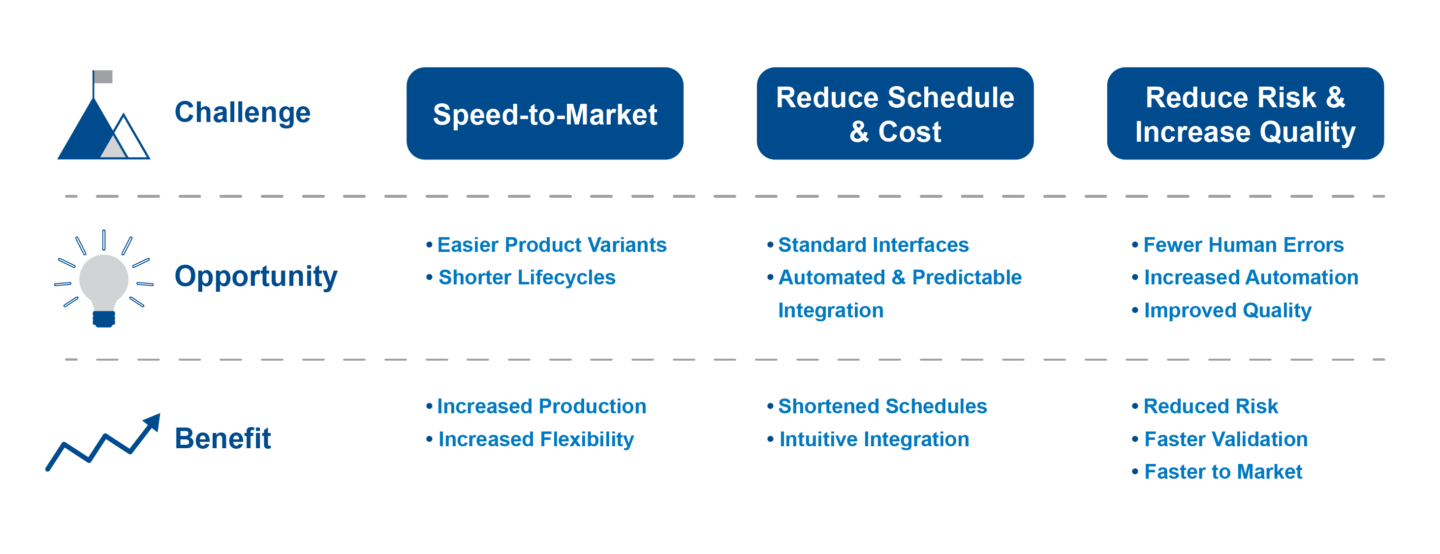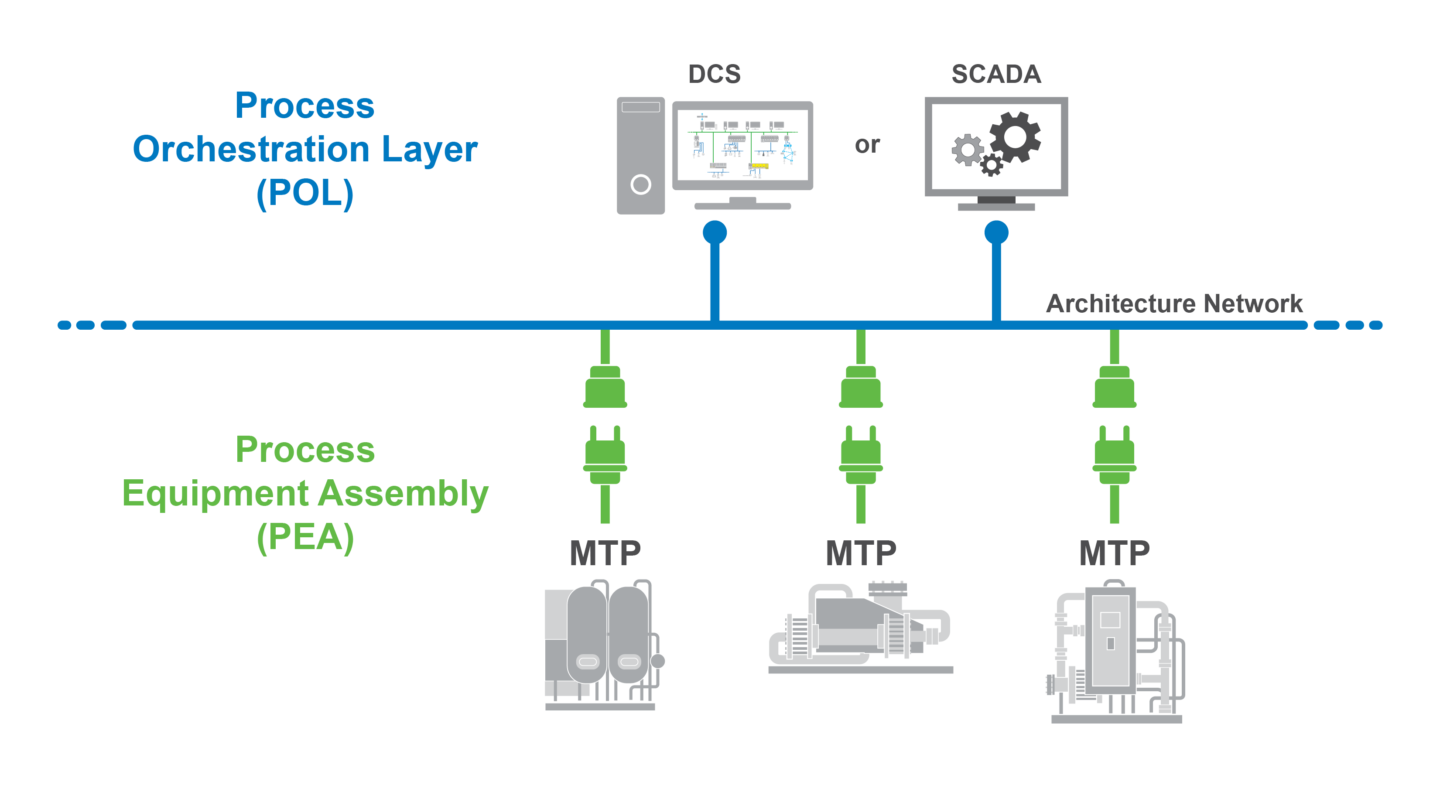Because automation is typically on the critical path of any capital project, delays in integration can have significant impacts on project timelines and costs. One of the most common areas where integrating equipment can delay project completion and startup is with intelligent devices (IDs).
In a recent article in Chemical Processing, Emerson’s Juan Carlos Bravo addressed this issue and explained how Module Type Package (MTP), an emerging technology will enable easier integration of modular systems.
What is MTP?
Juan Carlos explains that MTP is,
“a vendor-neutral description language designed to simplify data integration. Specifically, MTP serves to populate the data characteristics of IDs with the DCS. It concentrates on five common interface categories when integrating all manner of complex equipment into the larger DCS.”

MTP includes all necessary content in a single package, making equipment integration nearly plug-and-play.
MTP facilitates communication for equipment across many areas including
- Process control
- Safety and security
- Alarm management
- Human machine interface
- Maintenance diagnostics
Because MTP creates a common architecture, it makes integrating new equipment into the DCS as close to plug-and-play as the process has ever been, resulting in
“a shorter, cheaper, and less-complex process than manual methods.”
MTP will transform equipment integration
Today, there are so many variables in equipment integration, there can be little consistency from project to project, forcing teams to perform integration much later than desired. If everything goes as planned,
“Documentation for an equipment package will include a clear mapping of all the tags that enables identifying which are necessary for process control, operator HMIs, diagnostics, historizing and alarms. The DCS then would access these points over a variety of serial and Ethernet protocols such as Modbus, Ethernet/IP, PROFINET, OPC UA, etc. For each point, it is important to define a description, engineering units, scaling ranges, read/write/read-write capability, alarm values/messages and more.”
However, even if all the information needed is readily available, the work is complex and time-consuming. Juan Carlos explains,
“Often, the definition is transferred as a spreadsheet with hundreds or even thousands of lines. Such a spreadsheet not only is difficult and time-consuming to create and maintain but also is subject to human error in data entry. And, if the project is running behind schedule, the integrator must sort through it and do the analysis as quickly as possible.”
MTP’s common architecture eliminates the need for complex specialized integration. Integrators can connect IDs with the DCS directly, using a common architecture that is consistent and easy to format and transfer.

MTP not only reduces risk, schedule, and cost, but also helps improve quality and speed-to-market
Choosing the right MTP systems
The MTP structure has been designed more as a recommendation than as a standard. This means,
“a given situation with a specific ID and DCS will call for some tweaking, particularly if they come from different vendors. However, while implementations across a mix of vendors will not always be completely automatic, they are greatly simplified.”
Emerson offers systems that are optimized to take advantage of all MTP elements. Juan Carlos clarifies,
“For instance, if a plant is using an Emerson DeltaV™ DCS to run a process unit and adds an ID skid controlled by an Emerson PACSystems PLC, the connection from process equipment assembly to process orchestration layer will be seamless right out of the box. Naturally, all this operates within the bounds of NE 148 but any interpretations will be made the same way, ensuring the easiest, fastest and most-robust implementation.”

MTP offers seamless integration from process equipment assembly to process orchestration layer
For more information on Emerson’s MTP solutions, you can visit the Module Type Package page on Emerson.com. You can also learn more about how MTP will change the face of modular manufacturing by reading Juan Carlos’s article in its entirety. And while you’re here, feel free to comment below on your plans to implement MTP into future capital projects. We’d love to hear how this exciting technology has caught your attention.





